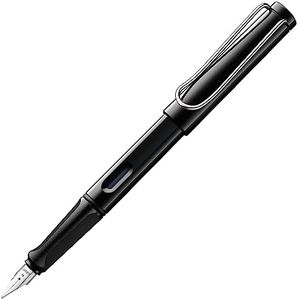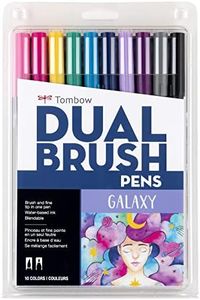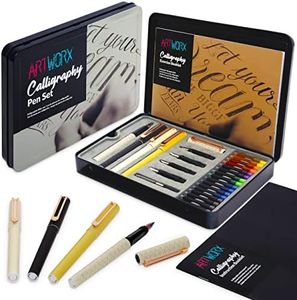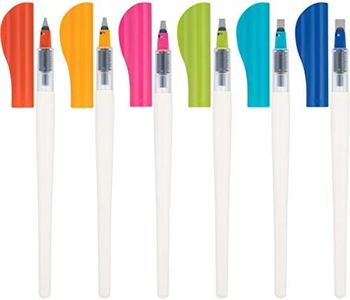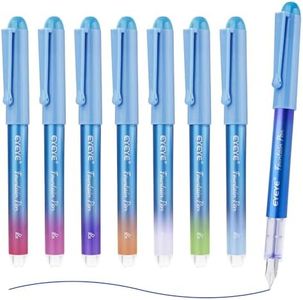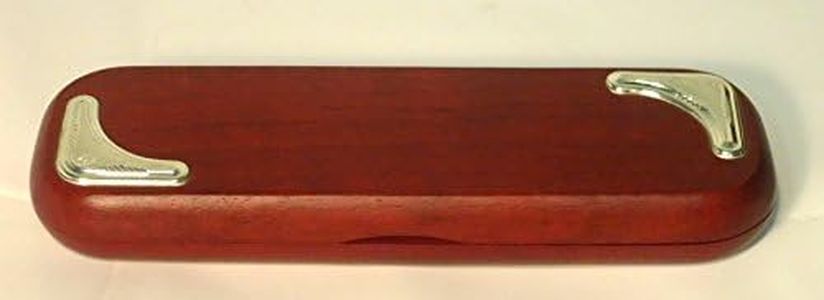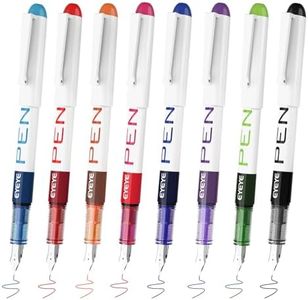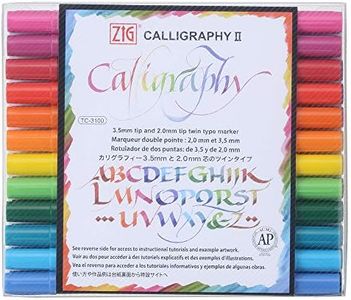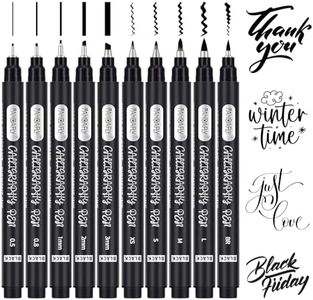10 Best Calligraphy Pens 2025 in the United States
Our technology thoroughly searches through the online shopping world, reviewing hundreds of sites. We then process and analyze this information, updating in real-time to bring you the latest top-rated products. This way, you always get the best and most current options available.

Our Top Picks
Winner
LAMY safari black - Fountain Pen with ergonomic grip & polished steel nib in size F - ideal for any Writing & Calligraphy - including LAMY T 10 blue cartridge - Right-Handed
Most important from
26063 reviews
The LAMY Safari fountain pen is well-regarded for its fine steel nib, which provides a smooth and consistent line suitable for everyday writing and beginner calligraphy. The nib size marked as 'F' (fine) offers precision but less line variation, so it may not satisfy those looking for more flexible, expressive strokes often desired in advanced calligraphy. The pen uses blue ink cartridges, making it convenient to replace and maintain, although it primarily supports cartridge ink rather than bottled ink without a converter.
Made from robust and lightweight ASA plastic, the pen body is durable and easy to carry around. One of its strongest points is the ergonomic grip, designed to reduce hand fatigue during long writing sessions, which is great for students and professionals alike. However, while the grip is comfortable, the pen’s plastic finish may feel less premium compared to metal-bodied options. The nib itself is polished steel, offering durability but limited flexibility, so it’s better suited for neat writing rather than highly flexible calligraphy styles.
The Safari also features a functional ink window to monitor ink levels, adding to its practicality. It supports interchangeable nibs, which can be helpful for users wanting to experiment with different line widths. The LAMY Safari serves as a dependable, stylish choice for beginners and intermediate users seeking a reliable fountain pen for writing and basic calligraphy, especially right-handed users, though it might feel limiting for those wanting more expressive or traditional calligraphy tools.
Most important from
26063 reviews
Tombow 56188 Dual Brush Pen Art Markers, Galaxy, 10-Pack. Blendable, Brush and Fine Tip Markers
Most important from
41227 reviews
The Tombow 56188 Dual Brush Pen set is designed more as an art marker than a traditional calligraphy pen, featuring a fine tip and a flexible brush tip that make it well suited for hand lettering, illustrations, and coloring projects. The nibs are water-based and blendable, allowing for smooth color transitions and a watercolor-like effect, which is ideal for creating vibrant, artistic strokes rather than precise calligraphy lines. The pen tips self-clean after blending, helping maintain consistent ink flow. The ink is acid-free and odorless, making it safe and pleasant to use, especially for longer sessions.
The available nib size is fine (about 0.5mm), which might feel a bit narrow for those who prefer broader calligraphy strokes. These pens work best on smooth, non-textured paper, so they may not perform well on rough or highly textured surfaces.
For those seeking a versatile, artist-friendly pen set capable of handling lettering with flexibility and vibrant colors, Tombow's Dual Brush Pens present a solid option. However, individuals primarily focused on traditional calligraphy with specific nib sizes and more comfort-focused designs might consider exploring pens with specialized nibs and ergonomic grips.
Most important from
41227 reviews
Artworx Calligraphy Pens Set - Introductory Caligraphy Writing & Hand Lettering Kit - Includes Instructions, Guide Book and Practice Book - Calligraphy Set For Beginners
Most important from
1767 reviews
The Artworx Calligraphy Pens Set is a solid choice for beginners starting with calligraphy or hand lettering. It comes with five different nib sizes and four fountain pens, offering a nice variety to experiment with different writing styles, which is great for learning flexibility in your strokes. The pens have a smooth grip and a comfortable body made from tin, which feels sturdy but lightweight enough to handle for extended writing sessions. The ink flows evenly and comes in assorted colors, adding fun and variety to your practice.
This set also includes a guidebook and practice book, which are very helpful if you're new to calligraphy and want step-by-step instructions. The click-off cap design keeps the pens secure and ready to use without drying out. One downside is that while the pens are designed for beginners, the nibs might require some patience to master, especially if you're looking for very fine control or advanced flexibility. Additionally, the tin material, while durable, might not feel as premium as some higher-end wooden or resin pen bodies.
For its price and completeness, this set offers good value and helps build fundamental skills for those new to calligraphy.
Most important from
1767 reviews
Buying Guide for the Best Calligraphy Pens
Choosing the right calligraphy pen can greatly enhance your writing experience and the quality of your work. Whether you are a beginner or an experienced calligrapher, understanding the key specifications of calligraphy pens will help you make an informed decision. Consider your personal needs, the type of calligraphy you want to practice, and the comfort of the pen in your hand. Here are the key specifications to consider when selecting a calligraphy pen.FAQ
Most Popular Categories Right Now


